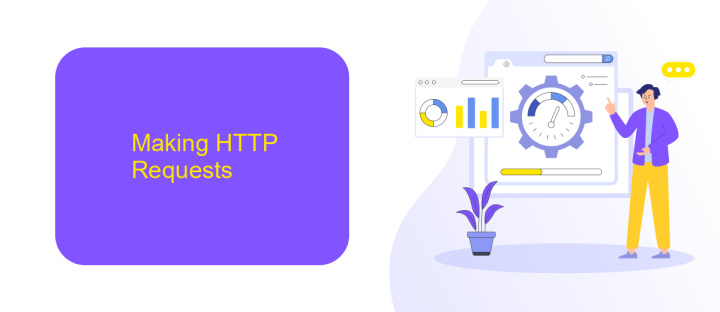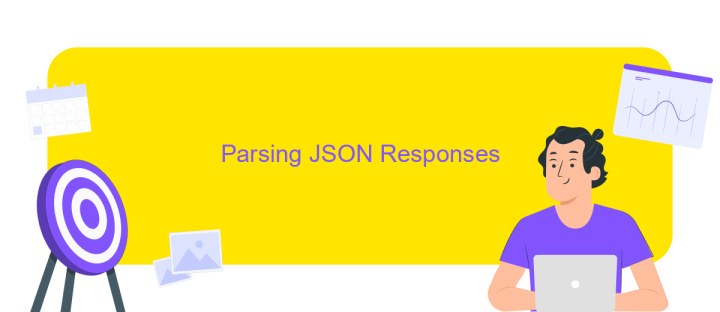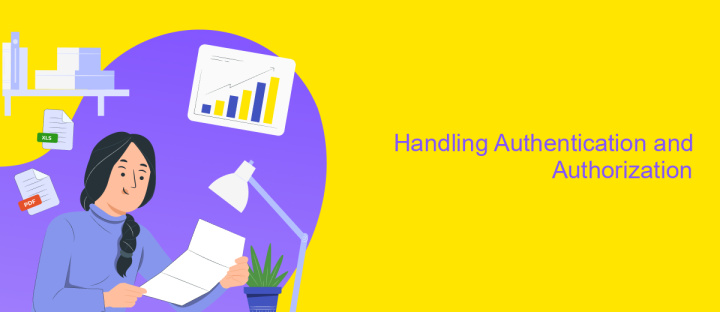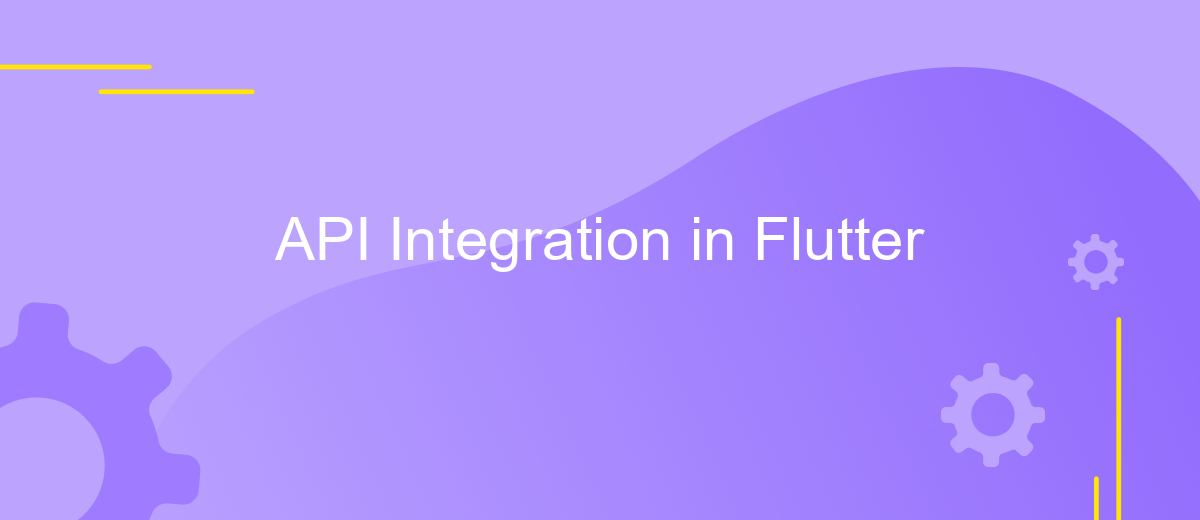API Integration in Flutter
API integration in Flutter plays a crucial role in modern app development, enabling seamless communication between applications and external services. By leveraging Flutter's robust framework, developers can efficiently connect to various APIs, enhancing app functionality and user experience. This article explores the essentials of API integration in Flutter, offering insights into best practices and practical examples to help you streamline your development process and create dynamic, responsive apps.
Introduction to API Integration in Flutter
API integration in Flutter is a crucial aspect of modern app development, allowing developers to connect their applications with external services and data. Flutter, a popular UI toolkit from Google, provides a seamless way to create cross-platform applications with a single codebase. By integrating APIs, developers can enhance the functionality of their Flutter apps, enabling them to fetch data from the internet, interact with cloud services, and provide real-time updates. Understanding how to effectively integrate APIs in Flutter is essential for creating robust and dynamic applications.
- Facilitates communication with web services.
- Enables data fetching and manipulation.
- Supports real-time updates and notifications.
- Enhances app functionality with third-party services.
- Allows seamless integration with cloud platforms.
Implementing API integration in Flutter involves using packages like http or Dio for HTTP requests, parsing JSON data, and managing asynchronous operations with Future and Stream. By mastering these techniques, developers can build applications that are not only visually appealing but also highly functional and responsive. As Flutter continues to evolve, understanding API integration will remain a vital skill for developers aiming to create sophisticated and user-friendly applications.
Making HTTP Requests

When integrating APIs in Flutter, making HTTP requests is a fundamental step. Flutter provides the `http` package, a powerful tool that simplifies sending HTTP requests to interact with web services. To begin, add the dependency to your `pubspec.yaml` file and import it into your Dart code. With the `http` package, you can easily perform GET, POST, PUT, and DELETE requests. For example, using `http.get(Uri.parse('https://api.example.com/data'))` allows you to fetch data from a server. Handling responses is straightforward, as the package provides intuitive methods to parse JSON data and manage errors effectively.
For more complex integrations, consider using ApiX-Drive, a service that streamlines API interactions without extensive coding. ApiX-Drive offers a user-friendly platform to automate data exchange between different applications, enhancing your Flutter app's functionality. By configuring integrations through ApiX-Drive, you can focus on building your app while it handles the heavy lifting of API communication. This approach not only saves time but also ensures reliable and efficient data synchronization, making it an excellent choice for developers seeking to optimize their workflow.
Parsing JSON Responses

When working with APIs in Flutter, parsing JSON responses is a crucial step in handling data efficiently. JSON, or JavaScript Object Notation, is a lightweight data interchange format that's easy for humans to read and write, and easy for machines to parse and generate. Flutter provides several ways to parse JSON, allowing developers to choose the method that best fits their needs.
Here are the steps to parse JSON responses in Flutter:
- Make an HTTP request using the
httppackage to fetch data from the API. - Convert the response body into a Dart object using
jsonDecode()from thedart:convertlibrary. - Create a model class that represents the JSON structure to map the data accurately.
- Use factory constructors in the model class to convert JSON data into Dart objects.
- Handle any exceptions or errors that might occur during the parsing process.
By following these steps, developers can efficiently parse JSON responses in Flutter, enabling seamless integration with various APIs. Proper parsing ensures that the data retrieved from APIs is correctly mapped to Dart objects, facilitating smooth data handling and manipulation within the application. This approach not only improves code readability but also enhances the app's performance and reliability.
Handling Authentication and Authorization

When integrating APIs in Flutter, handling authentication and authorization is crucial for ensuring secure access to resources. Authentication verifies the user's identity, while authorization determines their access level to different parts of the application. Implementing these processes effectively can protect both user data and application integrity.
To manage authentication in Flutter, you can use packages like Firebase Auth or OAuth2. These tools streamline the process of verifying user credentials and managing sessions. Once authenticated, you'll need to handle authorization to control access to specific features or data based on user roles or permissions.
- Utilize secure storage for tokens and credentials to prevent unauthorized access.
- Implement role-based access control (RBAC) to define user permissions.
- Regularly update and refresh tokens to maintain session security.
- Ensure proper error handling for authentication failures.
By carefully managing authentication and authorization, you can enhance the security and user experience of your Flutter application. It's important to stay updated with the latest security practices and adapt your implementation as needed to address potential vulnerabilities and ensure compliance with industry standards.
- Automate the work of an online store or landing
- Empower through integration
- Don't spend money on programmers and integrators
- Save time by automating routine tasks
State Management and API Integration Best Practices
Effective state management is crucial for seamless API integration in Flutter applications. By using state management solutions like Provider, Riverpod, or Bloc, developers can efficiently manage the state of their app, ensuring that data fetched from APIs is consistently reflected across the UI. These tools help in separating business logic from UI components, making the codebase more maintainable and scalable. Implementing a robust state management strategy allows for better handling of asynchronous operations, such as API calls, by providing mechanisms to manage loading states, error handling, and data updates.
When integrating APIs, it's essential to follow best practices to ensure reliability and performance. Utilize services like ApiX-Drive to streamline the integration process, allowing for easier management of API connections and automated data transfers. Ensure that your app handles API responses gracefully, implementing retry logic for failed requests and caching strategies to optimize network usage. Additionally, secure your API communications using HTTPS and proper authentication methods. By adhering to these practices, developers can create Flutter applications that are efficient, responsive, and capable of handling complex data interactions.
FAQ
What is API integration in Flutter, and why is it important?
How do I integrate a REST API into a Flutter app?
What are the best practices for handling API responses in Flutter?
How can I secure API requests in my Flutter app?
What tools can help automate API integration in Flutter?
Do you want to achieve your goals in business, career and life faster and better? Do it with ApiX-Drive – a tool that will remove a significant part of the routine from workflows and free up additional time to achieve your goals. Test the capabilities of Apix-Drive for free – see for yourself the effectiveness of the tool.


